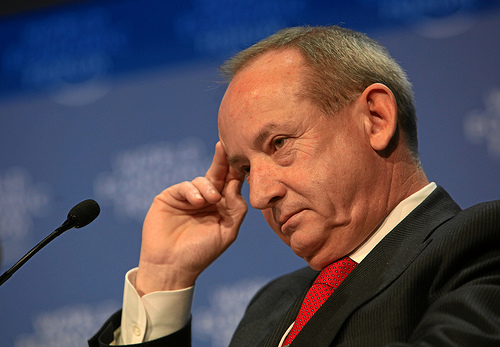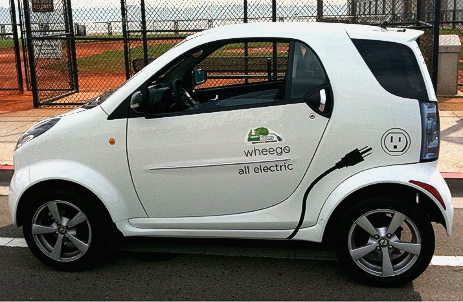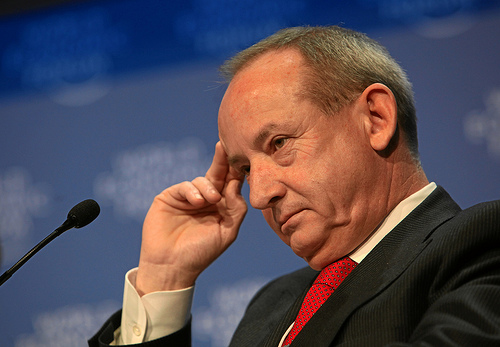 The change in governments in Japan could make Yvo de Boer’s job of shepherding a new climate deal easier.World Economic Forum via Flickr“If we continue at this rate we are not going to make it,” concluded a grim-faced Yvo de Boer at the end of the latest session of international climate talks in Bonn last month.
The change in governments in Japan could make Yvo de Boer’s job of shepherding a new climate deal easier.World Economic Forum via Flickr“If we continue at this rate we are not going to make it,” concluded a grim-faced Yvo de Boer at the end of the latest session of international climate talks in Bonn last month.
Three weeks later, and with just three months and only 15 UN negotiating days until the vital conference in Copenhagen, de Boer’s assessment still rings true. Three sessions in the former German capital’s modernistic Maritim Conference Center since the beginning of April have failed to make significant progress on a new international climate treaty. But some reasons for hope have very recently begun to emerge.
When the weary participants in the latest session went home on August 14, they left behind 2,500 areas of disagreement — enclosed in square brackets — in the 200 pages of the negotiating text. The text so far, as one delegate put it, is little more than a long “laundry list” of countries’ positions, with little progress made in reconciling them. “We seem,” said de Boer, who as executive secretary of the UN Framework Convention on Climate Change is in charge of the climate talks, “to be afloat on a sea of brackets.”
All the disagreements will have to be resolved, but there are two big sticking points which have held everything up for months. Developed countries have so far come nowhere near offering the 25-40 percent cut in emissions they agreed to in principle less than two years ago at a negotiating session in Bali, when George W. Bush was still the U.S. president. And they have yet to fulfill promises to come up with a firm offer of finance to help developing ones control their own contribution to climate change and adapt to its ill-effects.
Totting up what has been offered so far in emission reductions is not easy because countries have used different baselines for their cuts and some undertakings are complicated — but they seem, at best, to add up to only about 15 percent on 1990 levels by 2020, far short of the 40 percent many scientists say is needed.
Only the European Union has so far come anywhere near with its longstanding offer of a 20 percent reduction, rising to 30 percent if other industrialized countries make similar commitments. But as these have failed to emerge, and the recession has taken hold, the EU’s original enthusiasm has waned.
The failure over finance is even worse. Developing countries have long made clear that serious money is a precondition of any agreement. But even the EU has now twice refused to put anything on the table, even though it promised to do so by last spring. And, as de Boer says, it is even more “worrying” that “there is little or no clarity on how financial resources are going to be mobilized”.
It seems clear that at least $100 billion a year will be needed by 2030. This summer, in an attempt to break the deadlock, British Prime Minister Gordon Brown formally suggested a financial package that would be worth about that figure by 2020 and persuaded leaders at the G8 summit in Italy to study it.
No developed country has yet come out in favor of it, but privately it is beginning to attract some support, most notably from the European Commission. The chances that the EU will finally put an offer on the table this autumn are increasing.
More hopefully still, the landslide election victory by Japan’s longtime opposition Democratic Party could provide new impetus to the negotiations. The defeated prime minister, Taro Aso, set them severely back this summer when he announced a target that amounted to cutting emissions by just eight percent from 1990 levels by 2020, just one percent more than the country is committed to meet under the Kyoto Protocol.
The new government, by contrast, is committed to a 25 percent cut, even better than the EU is offering. This willingness to expand cuts in emissions will put pressure on the EU to move to 30 percent, and on other industrialized countries to do better, shifting the balance closer to what is needed.
The talks now move on to a potentially vital phase, when leaders could revitalize the prospects for Copenhagen at a series of summits — a special climate one at the United Nations in New York in two weeks time, immediately followed by the G20 in Pittsburgh. Though no final decisions will be taken until December’s showdown in the Danish capital, progress at the September gatherings — not least through private conversations between leaders — could transform the atmosphere for the two remaining sessions of pre-Copenhagen formal talks — in Bangkok and Barcelona.
Certainly something needs to happen. As de Boer says; “The speed of the negotiations must be considerably accelerated,” adding: “It would be incomprehensible if this opportunity were lost.”




